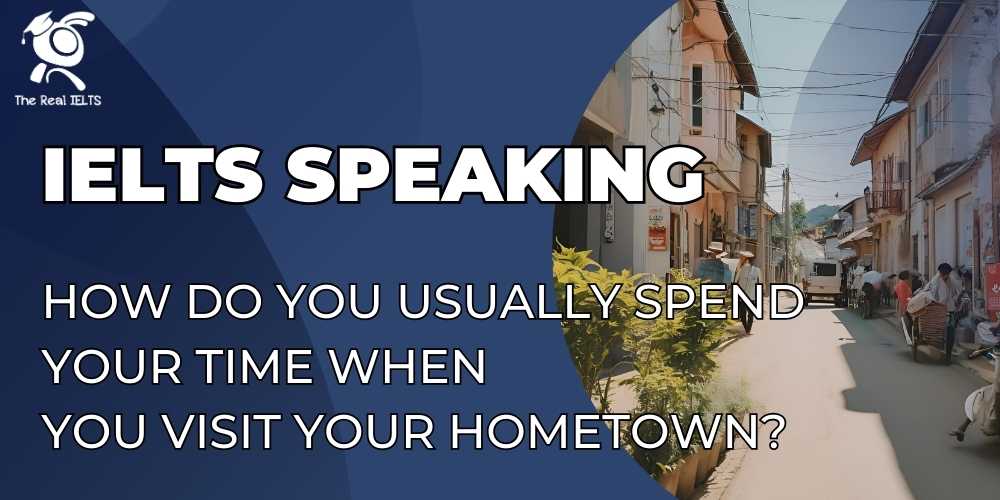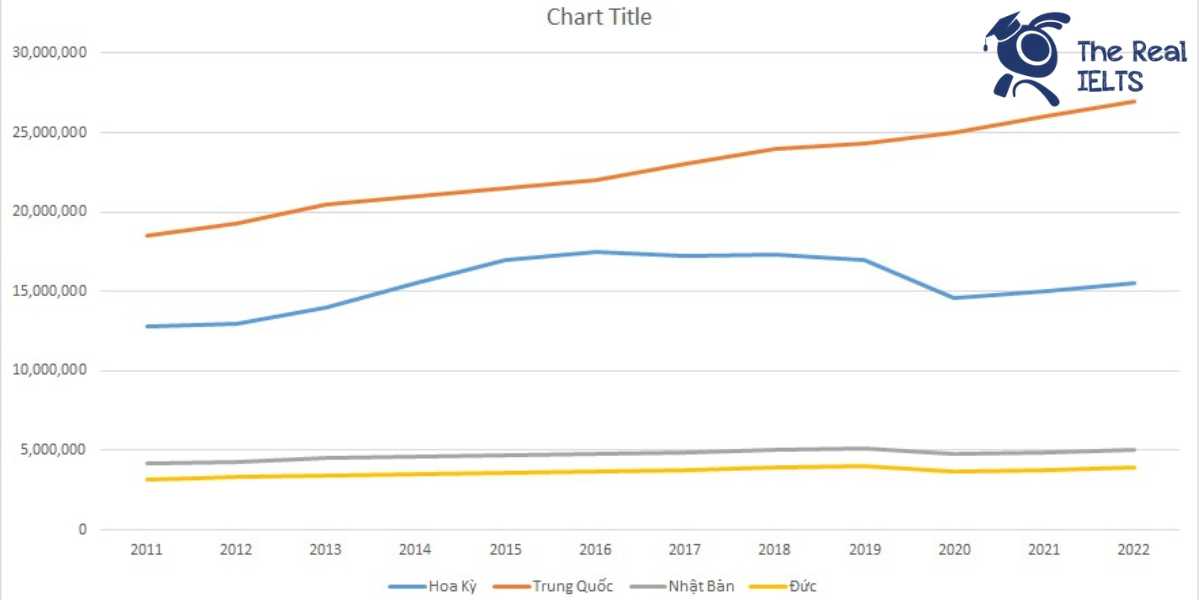Bài viết “How do you usually spend your time when you visit your hometown? IELTS Speaking Part 1” cung cấp những gợi ý và mẫu câu hữu ích để trả lời câu hỏi về cách bạn thường dành thời gian khi về thăm quê nhà. Bài viết giúp bạn nâng cao kỹ năng nói, từ vựng và cách diễn đạt tự nhiên, phù hợp với tiêu chí chấm điểm IELTS. Đây là nguồn tham khảo lý tưởng cho phần thi Speaking Part 1.
Đọc thêm các bài luyện thi IELTS khác.
Đọc thêm câu hỏi khác tại: IELTS Speaking Part 1: Introduction and Interview chủ đề Your hometown.
Đọc thêm IELTS Speaking: Do you think your hometown is well-developed?
Câu trả lời IELTS Speaking: How do you usually spend your time when you visit your hometown?
Ví dụ 1:
Introduction:
My hometown is Da Nang, a vibrant coastal city located in central Vietnam. It holds a special place in my heart because it’s where I grew up and where my family still lives. Every time I visit, I feel a deep sense of belonging and nostalgia.
Geographical Description:
Da Nang is known for its stunning natural beauty. It’s nestled between the East Sea and the Truong Son Mountains, offering a perfect blend of beaches and lush greenery. The Han River flows through the city, adding to its charm. One of the most iconic landmarks is the Dragon Bridge, which lights up at night and even breathes fire on weekends.
Cultural Aspects:
The city is a melting pot of cultures, with influences from both traditional Vietnamese customs and modern lifestyles. One of the most unique festivals is the Da Nang International Fireworks Festival, which attracts visitors from all over the world. The local cuisine is also a highlight, with dishes like mi Quang and banh xeo being must-tries.
Historical Background:
Da Nang has a rich history, dating back to the ancient Cham civilization. The Marble Mountains, located just outside the city, are not only a natural wonder but also home to several Buddhist pagodas and historical caves. The city also played a significant role during the Vietnam War, and remnants of that era can still be seen in places like the Da Nang Air Base.
Economic Activities:
Tourism is a major economic driver in Da Nang, thanks to its beautiful beaches and cultural attractions. The city is also a hub for trade and manufacturing, with a growing tech industry. Many locals work in hospitality, fishing, or small businesses, which gives the city a lively and entrepreneurial spirit.
Personal Connection:
Whenever I visit Da Nang, I spend most of my time reconnecting with family and friends. We often gather for meals, where my mom prepares her famous mi Quang. I also love taking early morning walks along My Khe Beach, feeling the cool breeze and listening to the waves. Another favorite activity is exploring the Marble Mountains, where I can reflect and enjoy the peaceful atmosphere.
Conclusion:
In summary, visiting my hometown is always a heartwarming experience. From its breathtaking landscapes and rich culture to its historical significance and bustling economy, Da Nang has so much to offer. But what I love most is the sense of community and the cherished memories I’ve built there over the years. It’s not just a place—it’s a part of who I am.
Ví dụ 2:
Introduction:
My hometown is Hue, a serene and historic city located in central Vietnam. It’s a place that holds immense significance for me because it’s where my roots are, and it’s filled with memories of my childhood. Every time I return, I feel a deep sense of peace and connection to my heritage.
Geographical Description:
Hue is nestled along the banks of the Perfume River, surrounded by lush green hills and mountains. The city is known for its tranquil landscapes, with the river winding through its heart and the iconic Truong Tien Bridge adding to its charm. The nearby Hai Van Pass offers breathtaking views of the coastline and mountains, making it a favorite spot for nature lovers.
Cultural Aspects:
Hue is often referred to as the cultural heart of Vietnam. It’s famous for its imperial history and traditional arts. The city is home to the Hue Festival, a biennial event that showcases traditional music, dance, and royal ceremonies. I always make sure to visit during this time to immerse myself in the vibrant culture. The local cuisine is also a highlight, with dishes like bun bo Hue and banh khoai being absolute must-tries.
Historical Background:
Hue was once the imperial capital of Vietnam, and its rich history is evident in its architecture and landmarks. The Hue Citadel, a UNESCO World Heritage Site, is a sprawling complex of palaces, temples, and gates that reflect the grandeur of the Nguyen Dynasty. The royal tombs scattered along the Perfume River are also fascinating to explore, each with its unique design and history.
Economic Activities:
Tourism is a major economic activity in Hue, thanks to its historical and cultural attractions. Many locals are involved in handicrafts, such as making conical hats or embroidering traditional garments. Agriculture also plays a significant role, with rice paddies and vegetable farms dotting the outskirts of the city.
Personal Connection:
When I visit Hue, I love spending my time reconnecting with my family and exploring the city’s hidden gems. Mornings often start with a bowl of bun bo Hue at a local street vendor, followed by a leisurely stroll along the Perfume River. I also enjoy visiting the Thien Mu Pagoda, where I can reflect and enjoy the peaceful surroundings. One of my favorite activities is taking a boat ride on the river, especially at sunset, when the sky turns shades of orange and pink.
Conclusion:
In summary, Hue is a city that beautifully blends history, culture, and natural beauty. Every visit feels like a journey back in time, and I always leave with a renewed sense of pride in my heritage. What I love most about Hue is its tranquility and the way it allows me to reconnect with my roots and create lasting memories with my loved ones. It’s not just a hometown—it’s a part of my soul.















